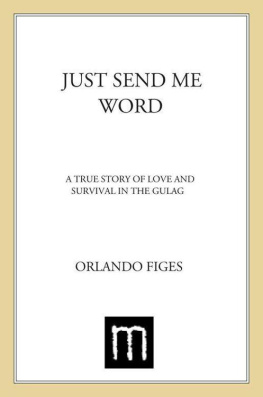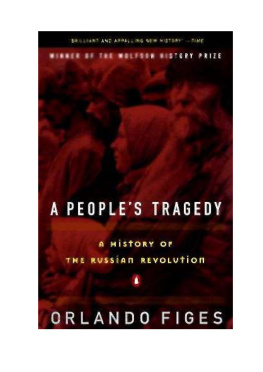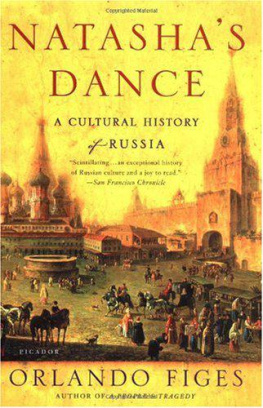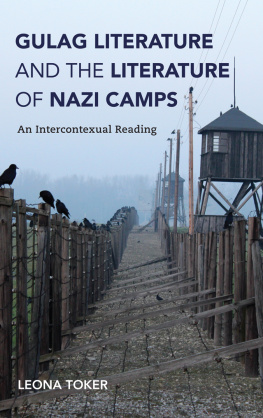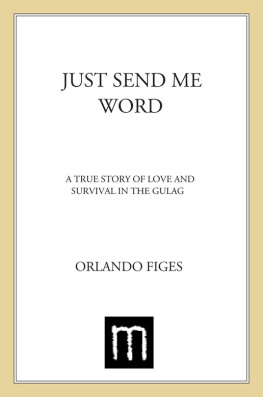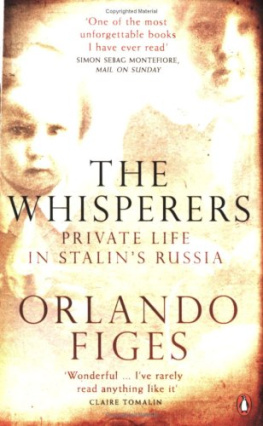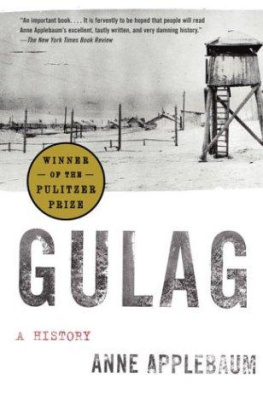Three old trunks had just been delivered. They were sitting in a doorway, blocking peoples way into the busy room where members of the public and historical researchers were received in the Moscow offices of Memorial. I had come that autumn of 2007 to visit some colleagues here in the research division of the human rights organization. Noticing my interest in the trunks, they told me they contained the biggest private archive given to Memorial in its twenty years of existence. It belonged to Lev and Svetlana Mishchenko, a couple who had met as students in the 1930s, only to be separated by the war of 19415 and Levs subsequent imprisonment in the Gulag. As everyone kept telling me, their love story was extraordinary.
We opened up the largest of the trunks. I had never seen anything like it: several thousand letters tightly stacked in bundles tied with string and rubber bands, notebooks, diaries, documents and photographs. The most valuable section of the archive was in the third and smallest of the trunks, a brown plywood case with leather trim and three metal locks that clicked open easily. We couldnt say how many letters it contained we guessed perhaps 2,000 only how much the case weighed (37 kilograms). They were all love letters Lev and Svetlana had exchanged while he was a prisoner in Pechora, one of Stalins most notorious labour camps in the far north of Russia. The first was by Svetlana in July 1946, the last by Lev in July 1954. They were writing to each other at least twice a week. This was by far the largest cache of Gulag letters ever found. But what made them so remarkable was not just their quantity: it was the fact that nobody had censored them. They were smuggled in and out of the labour camp by voluntary workers and officials who sympathized with Lev. Rumours about the smugglingof letters were part of the Gulags rich folklore but nobody had ever imagined an illegal postbag of this size.
The letters were so tightly packed I had to wedge my fingers between them to get the first one out. It was from Svetlana to Lev. The short address read:
Komi ASSR
Kozhva Region
Wood-combine
C[orrection] C[amp] 274-11b
To Lev Glebovich Mishchenko
I began to read Svetlanas small, barely legible handwriting on the yellow paper, which crumbled in my hands. So here I am, not even knowing what I should write to you. That I miss you? But you know that. I feel I am living outside time, that Im waiting for my life to start, as if this were an intermission. Whatever I do, it seems like Im just killing time. I took another letter from the same bundle. It was one of Levs. You once asked whether its easier to live with or without hope. I cant summon any kind of hope, but I feel calm without it I was listening to a conversation between them.
Svetlanas first letter (1946) .
As I leafed through the letters, my excitement grew. Levs were rich in details of the labour camp. They were possibly the only major contemporary record of daily life in the Gulag that would ever come to light. Many memoirs of the labour camps by former prisoners had appeared, but nothing to compare with these uncensored letters, composed at the time inside the barbed-wire zone. Written to explain to his sole intended reader what he was going through, Levs letters became, over the years, increasingly revealing about conditions in the camp. Svetlanas letters were meant to support him in the camp, to give him hope, but, as I soon realized, they also told the story of her own struggle to keep her love for him alive.
Levs twenty-fourth (1946).
Perhaps 20 million people, mostly men, endured Stalins labour camps. Prisoners, on average, were allowed to write and receive letters once a month, but all their correspondence was censored. It was difficult to maintain an intimate connection when all communication was first read by the police. An eight- or ten-year sentence almost always meant the breaking of relationships: girlfriends, wives or husbands, whole families, were lost by prisoners. Lev and Svetlana were exceptional. Not only did they find a way to write and even meet illegally an extraordinary breach of Gulag rules that invited severe punishment but they kept every precious letter (putting them at even greater risk) as a record of their love story.
There turned out to be almost 1,500 letters in that smallest trunk. It took over two years to transcribe them all. They were hard to decipher, full of code words, details and initials that needed to be clarified. These letters are the documentary basis of Just Send Me Word , which also draws from the rich archive in the other trunks, from extensive interviews with Lev and Svetlana, their relatives and their friends, from the writings of other prisoners in Pechora, from visits to the town and interviews with its inhabitants and from the archives of the labour camp itself.
Lev saw Svetlana first. He noticed her at once in the crowd of students waiting to be called to the entrance exam in the tree-lined courtyard of Moscow University. She was standing by the doorway to the Physics Faculty with a friend of Levs who waved him over and introduced her as a classmate from his former school. They exchanged only a few words before the doors of the faculty were opened and they joined the throng of students on the staircase to the hall where the exam would be held.
It was not love at first sight: both agree on that. Lev was far too cautious to fall in love so easily. But Svetlana had already caught his attention. She was of medium height, slim with thick brown hair, high cheekbones, a pointed chin, and blue eyes shining with a sad intelligence. She was one of only a half dozen women to gain admission to the faculty, the best for physics in the Soviet Union, along with Lev and thirty other men in September 1935. In a dark wool shirt, short grey skirt and black suede shoes, the same clothes she had worn as a schoolgirl, Svetlana stood out in this masculine environment. She had a lovely voice (she would sing in the university choir) which added to her physical attractiveness. She was popular, vivacious, occasionally flirtatious and known for her sharp tongue. Svetlana had no shortage of male admirers, but there was something special about Lev. He was neither tall nor powerfully built he was slightly smaller than she was nor as confident of his good looks as other young men of his age. He wore the same old shirt the top button fastened but without a tie in the Russian style in all the photos of him at the time. He was still more of a boy than a man in appearance. But he had a kind and gentle face with soft blue eyes and a full mouth, like a girls.
During that first term, Lev and Sveta (as he began to call her) saweach other frequently. They sat together in lectures, nodded to each other in the library, and moved in the same circle of budding physicists and engineers who ate together in the canteen or met in the student club near the entrance to the library where some would come for a cigarette, others just to stretch their legs and chat.

